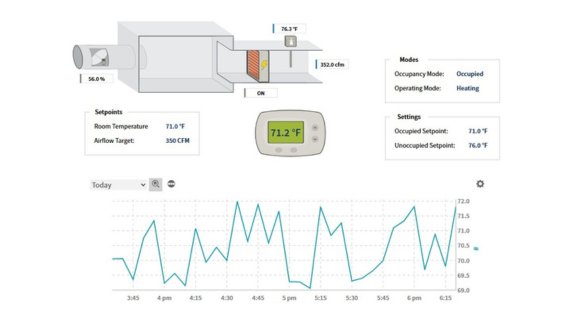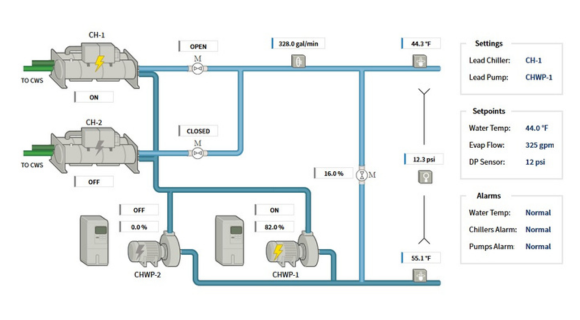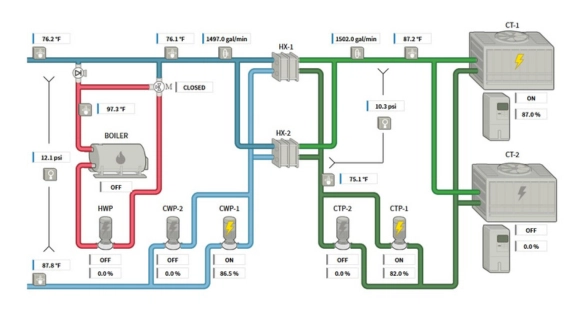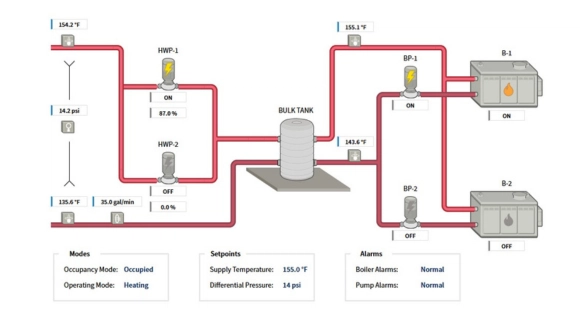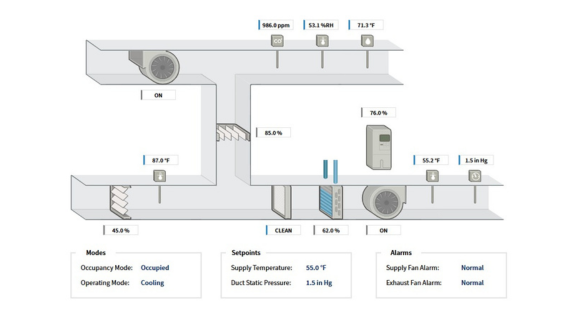Application
Air-cooled chilled water systems use outdoor chillers to remove heat from water, which is then distributed to air handling units or terminal devices throughout the building. These systems are typically used in mid-sized commercial buildings, schools, retail centers, and data rooms, where water availability, maintenance access, and cost are key considerations.
Operators often face challenges like inconsistent cooling performance, high energy costs, and limited visibility into chiller operation, especially in peak demand conditions. A well-designed BMS interface solves many of these issues by centralizing control and providing real-time system insights.
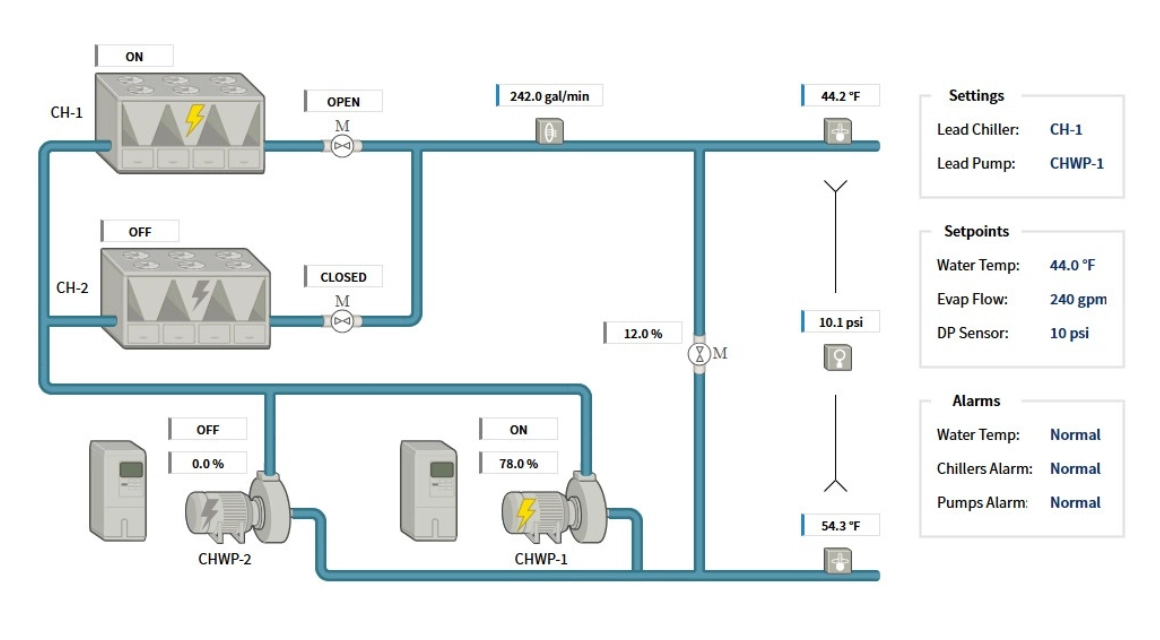
User Interface Benefits
Monitor chiller operation and load conditions in real time: Ensures cooling capacity aligns with building demand, helping maintain comfort and system efficiency.
Track temperatures, pressures, and equipment status across the loop: Enables early detection of performance issues or inefficiencies before they escalate.
Adjust setpoints and schedules remotely: Helps reduce unnecessary runtime and energy waste during off-hours or low-load conditions.
Receive alarms and trend data: Supports proactive maintenance and prevents unexpected system failures.
Takeaways
A reliable BMS interface is key to getting the most out of air-cooled chilled water systems. With real-time monitoring, remote control, and performance insights, facility teams can better manage comfort, reduce operating costs, and avoid system downtime.
Looking to Manage your HVAC Chiller Plant More Effectively?
We build BMS solutions that give operators more control and visibility for better comfort, efficiency, and reliability.


